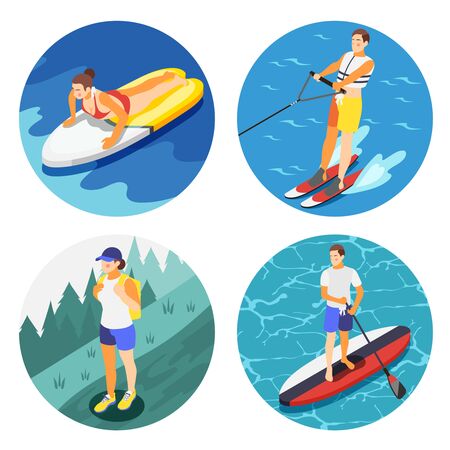1. Understanding Hypothermia in the UK Climate
When exploring the great British outdoors, it’s important to remember that our weather can be notoriously unpredictable. The risk of hypothermia is not just a winter concern; even in spring and autumn, chilly winds and persistent drizzle can quickly lower body temperature. In the rolling countryside, open moorlands, and along our rugged coastlines, conditions can change in a heartbeat. Thick fog, sudden rain showers, and blustery gales are all part and parcel of the UK experience. These factors combine to increase the risk of hypothermia, especially for walkers, hikers, and families enjoying a day out who might underestimate how quickly the cold can set in. Moisture from rain or sea spray, combined with wind chill on exposed hills or beaches, means that even mild temperatures can become dangerous if you’re not properly prepared. Understanding how these typical British conditions contribute to hypothermia is essential for anyone heading outdoors, ensuring you’re ready to recognise early signs and respond effectively.
2. Common Scenarios and Who’s at Risk
The British outdoors can be unpredictable, with weather conditions changing rapidly even in summer months. Hypothermia is not just a winter concern; it can develop during everyday activities where people may underestimate the risks posed by wind, rain, or unexpected drops in temperature.
Everyday Activities Where Hypothermia Can Occur
It’s easy to assume hypothermia only affects extreme adventurers, but it can happen closer to home than you might think. Simple outings such as:
- Walking the dog in the park on a chilly evening
- Family camping trips
- Fishing by rivers or lakes
- Hillwalking or rambling on exposed moorland
- Cycling or running in wet and windy weather
- Spectating outdoor sports events
All these activities have the potential for someone to become cold and wet—two key ingredients for hypothermia if you’re not dressed appropriately or caught out by the elements.
Who Is Particularly Vulnerable?
Some groups are more susceptible to hypothermia due to physical or behavioural factors. Here’s a quick guide:
| Group | Why They Are at Greater Risk |
|---|---|
| Children | They lose heat faster than adults, may not recognise when they are cold, and often continue playing despite discomfort. |
| Older Adults | Their bodies are less efficient at retaining heat, and they may not feel temperature changes as acutely. |
| Hillwalkers & Ramblers | Exposure to wind and rain on high ground increases risk, especially if clothing is inadequate or if delays occur. |
| Canoeists & Anglers | Being near or in water dramatically increases heat loss through conduction, even in mild weather. |
| People with Medical Conditions | Certain health issues (like hypothyroidism or heart disease) can impair the body’s ability to regulate temperature. |
| Those Consuming Alcohol | Alcohol impairs judgement and causes blood vessels to expand, leading to quicker heat loss. |
No matter your age or fitness level, anyone enjoying the great British outdoors should be aware of hypothermia risks. Proper preparation—dressing in layers, checking the forecast, and carrying emergency supplies—can make all the difference for you and your loved ones.

3. Spotting the Early Signs
When youre out enjoying the British countryside, whether rambling through the Lake District or exploring a breezy coastal path, recognising the early signs of hypothermia is absolutely vital. The tricky part? Early symptoms can be subtle and easily brushed off as simply feeling “a bit chilly” or tired. However, knowing what to look for in yourself and your companions can make all the difference.
What to Look Out For
Early warning signs often begin with shivering—our bodys first response to losing heat. But its not just about being cold. You might notice someone becoming unusually quiet or withdrawn, struggling to keep up with conversation or pace. Clumsiness is another red flag; fumbling fingers, dropping kit, or finding it difficult to do up zips are classic symptoms. Watch for slurred speech, confusion, or irritability too—these changes in mood and behaviour are particularly important in children and older adults.
The Importance of Regular Check-Ins
Outdoors in Britain, our weather can change at the drop of a hat. Thats why regular check-ins with everyone in your group are so important. Dont just ask how theyre feeling; look for those tell-tale signs and encourage honesty about warmth and comfort levels. It’s easy to downplay discomfort on a family walk or group hike, but checking in could prevent a small problem from becoming serious.
Teamwork Makes the Difference
In true British spirit, teamwork is key when facing the elements. Keep an eye out for each other and speak up if you spot any early signs of hypothermia—your gentle nudge might be just what someone needs to put on an extra layer or take a break. Remember, catching hypothermia early means you can act quickly and keep your outdoor adventure safe and enjoyable for everyone.
4. Immediate First Aid: What To Do
If you suspect someone is experiencing hypothermia while out walking in the British countryside, acting swiftly can make all the difference. Here’s a practical, step-by-step guide using items you’re likely to have in your rambler’s rucksack.
Step-by-Step Actions for Suspected Hypothermia
| Step | Action | Common Items to Use |
|---|---|---|
| 1. Move to Shelter | Get the person out of wind and rain, ideally into a tent or behind a dry stone wall. | Tent, emergency bivvy bag, bothy bag, waterproof jacket |
| 2. Remove Wet Clothing | Carefully take off any damp clothes and replace them with dry layers. | Spare base layer, fleece jumper, woolly hat, gloves, dry socks |
| 3. Insulate from the Cold Ground | Place something insulating underneath the person. | Sit mat, foam pad, spare jacket or rucksack |
| 4. Warm Slowly and Gently | Wrap them up warmly but avoid direct heat (like hot water bottles directly on skin). | Sleeping bag, foil blanket, extra clothing layers |
| 5. Offer Warm Drinks & Food (if alert) | If they are fully conscious and able to swallow, offer warm (not hot) sugary drinks and snacks. | Thermos with tea/hot squash, chocolate bar, Kendal mint cake, flapjack |
| 6. Monitor & Call for Help | Keep an eye on their breathing and consciousness—call 999 or 112 if needed. | Mobile phone (with signal), whistle to attract attention if no signal |
Extra Tips for British Outdoor Settings
- Avoid rubbing the person’s skin: This can cause further damage when they’re very cold.
- No alcohol: It may feel warming but actually makes hypothermia worse.
- If in doubt, call for help early: The weather can change quickly on the fells and moors; don’t wait until things get worse before seeking assistance.
- If you’re in a group: Assign someone to keep spirits up with gentle chat—morale matters in tough conditions.
A Word on British Weather Preparedness
The unpredictable British weather means it’s wise to pack an extra pair of socks and a hot drink even for short walks—these little comforts can become vital first aid tools when someone is feeling chilly or at risk of hypothermia.
5. Prevention: Staying Warm and Dry Outdoors
Preventing hypothermia is always better than having to treat it, especially when braving the unpredictable British outdoors. The UK’s climate is famously changeable—one minute you’re enjoying a bit of sunshine, and the next you’re caught in a chilly downpour or blustery winds. Here are some practical tips tailored to our local conditions to help you stay warm and dry.
Choose the Right Kit for British Weather
First and foremost, invest in high-quality waterproofs—a proper rain jacket and trousers are essential, not just “showerproof” options. Look for breathable fabrics like Gore-Tex or similar materials so you don’t get clammy inside your gear. Wellies or waterproof walking boots with good grip are vital for muddy paths, common throughout Britain’s countryside.
Master the Art of Layering
Layering is key to keeping warm, especially in the UK where temperatures can drop quickly. Start with a moisture-wicking base layer (avoid cotton as it holds water), add an insulating layer such as fleece or wool, and finish with a windproof and waterproof outer shell. This system lets you adapt easily if you get too hot or cold along the way.
Packing Extras for Family Outings
If you’re heading out with little ones, pack extra hats, gloves, and socks—children lose heat faster than adults. A spare set of clothes in a dry bag can be a lifesaver if someone takes a tumble into a puddle or stream.
Plan for Wet and Windy Conditions
The British weather can turn on a sixpence, so always check the forecast before setting out. Avoid exposed areas in high winds, and remember that wet conditions increase the risk of hypothermia even at moderate temperatures. Take regular breaks to check everyone is warm and dry, especially during long walks.
Top Tips for Staying Cosy
Bring a flask of hot tea or squash for quick warmth, keep moving to maintain body heat, and don’t ignore early signs of feeling cold—especially tingling fingers or shivering. By being prepared and dressing appropriately, you’ll help ensure your outdoor adventures remain safe and enjoyable for all the family.
6. When and How to Call for Help
Recognising hypothermia early and taking action is essential, but there are times when professional help is absolutely necessary. In the British outdoors, knowing how and when to contact emergency services can make a critical difference.
Knowing When to Seek Emergency Assistance
If someone is showing moderate to severe signs of hypothermia—such as confusion, slurred speech, drowsiness, shivering that stops, or unconsciousness—it’s time to call for help straight away. Don’t wait for the casualty’s condition to worsen; early intervention saves lives.
How to Contact British Emergency Services
Dial 999 or 112 from any phone. Both numbers will connect you with the UK’s emergency services. Mobile signal can be patchy in rural areas, so if you have no signal, try sending a text message to 999 (you must register your phone in advance by texting ‘register’ to 999). If you’re using a landline in a remote cottage or bothy, this can sometimes provide a more stable connection.
What Information to Provide
- Your exact location: Use grid references, landmarks, or smartphone GPS coordinates. Apps like OS Locate or What3Words can be invaluable.
- The number of people affected and their ages.
- A description of symptoms and what has happened so far.
- Details about access routes for rescuers (for example: “We are on the Pennine Way, half a mile north of Malham Cove”).
Stay Calm and Follow Instructions
Once you’ve made contact, stay on the line if possible and follow any instructions given by the operator. Keep the casualty as warm as possible and do not attempt to move them unless they are in immediate danger. Reassure everyone involved and prepare for help to arrive.
Being prepared with this knowledge ensures that even in the unpredictable British outdoors, you’ll know exactly what to do if hypothermia strikes, helping keep your adventure safe for everyone involved.


